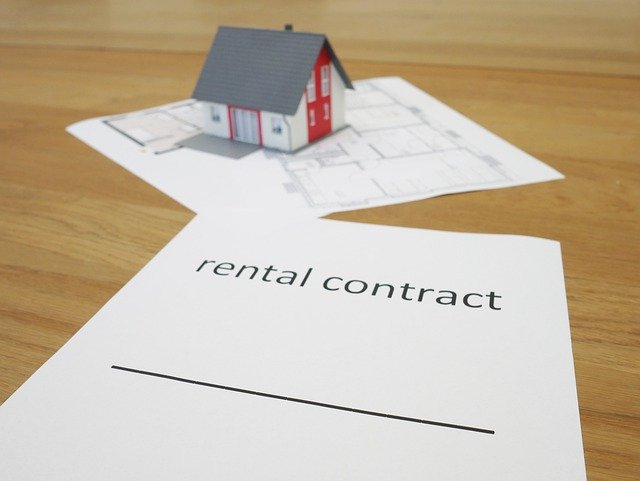How to Find Affordable Studio Apartments for Rent
Studio apartments offer a practical and budget-friendly housing solution for individuals seeking independence without the burden of high rent. These compact living spaces combine sleeping, cooking, and living areas into one efficient layout, making them ideal for students, young professionals, and anyone prioritizing location over square footage. Understanding how to navigate the rental market, evaluate neighborhoods, and recognize the benefits of studio living can help you secure an affordable apartment that meets your needs and lifestyle.

Finding an affordable studio apartment requires strategic planning, market research, and a clear understanding of your priorities. The rental landscape varies significantly across different cities and neighborhoods, with factors like proximity to public transportation, local amenities, and neighborhood safety all influencing price points. By approaching your search methodically and knowing what to look for, you can identify a studio apartment that balances affordability with quality of life.
Learn About Studio Apartment Rentals
Studio apartments are self-contained units featuring an open floor plan where the bedroom, living room, and kitchen occupy a single space, with only the bathroom separated by walls. Typically ranging from 300 to 600 square feet, these units appeal to renters who value minimalism and efficient use of space. Understanding the rental process begins with researching average market rates in your target area. Online rental platforms, local real estate websites, and classified ads provide valuable insights into current pricing trends. Many landlords require first and last month’s rent plus a security deposit, so budgeting for these upfront costs is essential. Additionally, familiarize yourself with lease terms, tenant rights, and what utilities are typically included in studio rentals. Some properties include water and trash services, while others require tenants to cover all utilities separately. Knowing these details helps you calculate the true monthly cost of renting.
Location Selection
Choosing the right location significantly impacts both your rental cost and quality of life. Urban centers and neighborhoods near business districts typically command higher rents due to convenience and access to employment opportunities. However, exploring areas slightly outside the city core or neighborhoods undergoing revitalization can yield more affordable options without sacrificing too much convenience. Consider proximity to public transportation, as this can reduce commuting costs and expand your housing options beyond walkable distances. Evaluate neighborhood safety by reviewing crime statistics and visiting the area at different times of day. Access to grocery stores, pharmacies, laundromats, and other essential services should factor into your decision. Additionally, research the neighborhood’s future development plans, as areas experiencing growth may see rent increases over time. Balancing affordability with accessibility ensures you find a location that supports your daily routine without straining your budget.
Advantages of Choosing a Studio Apartment
Studio apartments offer numerous benefits beyond affordability. Lower rent compared to one-bedroom units allows you to allocate more income toward savings, debt repayment, or discretionary spending. Utility costs are typically reduced due to the smaller space requiring less heating, cooling, and electricity. Maintenance and cleaning demand less time and effort, freeing up your schedule for work, hobbies, or social activities. The compact layout encourages minimalist living, helping you avoid accumulating unnecessary possessions and maintain an organized environment. Many studio apartments are located in vibrant neighborhoods with easy access to restaurants, entertainment, and cultural attractions. For remote workers or students, the simplified living arrangement can enhance focus and productivity. Additionally, studio rentals often have more flexible lease terms, making them suitable for those uncertain about long-term housing commitments or planning to relocate within a year or two.
Comparing Rental Costs Across Providers
Understanding the rental market requires examining real pricing examples from various providers and property management companies. The following table presents cost estimations for studio apartments from different rental sources, helping you gauge what to expect in the current market. These figures represent typical ranges and may vary based on location, amenities, and market conditions.
| Provider/Platform | Average Studio Rent | Key Features |
|---|---|---|
| Apartment Complexes | $900 - $1,500/month | Managed properties, amenities like gyms and pools, professional maintenance |
| Private Landlords | $700 - $1,200/month | Direct communication, potentially more flexible terms, varies by property condition |
| Corporate Housing | $1,500 - $2,500/month | Furnished units, short-term leases, utilities often included |
| Subsidized Housing | $400 - $800/month | Income-restricted eligibility, government assistance programs, waitlists common |
| Co-Living Spaces | $800 - $1,400/month | Shared common areas, community-focused, often includes utilities and internet |
Prices, rates, or cost estimates mentioned in this article are based on the latest available information but may change over time. Independent research is advised before making financial decisions.
Strategies for Securing Affordable Rentals
Successfully finding an affordable studio apartment requires proactive strategies and timing. Begin your search at least 30 to 60 days before you need to move, as this window aligns with typical lease turnover periods. Use multiple search platforms including online rental sites, social media groups, and local bulletin boards to maximize your options. Consider renting during off-peak seasons, typically winter months, when demand decreases and landlords may offer concessions or lower rates. Be prepared to act quickly when you find a suitable apartment, as affordable units often receive multiple applications within days of listing. Having your documentation ready, including proof of income, references, and rental history, demonstrates reliability and can give you an advantage over other applicants. Don’t hesitate to negotiate rent, especially if you’re signing a longer lease or the unit has been vacant for an extended period. Some landlords may waive application fees or offer the first month at a reduced rate to secure reliable tenants.
Evaluating Apartment Features and Amenities
While affordability is paramount, assessing the apartment’s condition and included features ensures you’re getting value for your money. Inspect the unit for signs of maintenance issues such as water damage, mold, or pest problems. Test appliances, plumbing fixtures, and heating or cooling systems to confirm they function properly. Adequate natural light and ventilation contribute to comfort and can reduce energy costs. Storage space, though limited in studios, should be sufficient for your belongings, with closets or built-in shelving being valuable features. Consider whether the building offers amenities like laundry facilities, secure entry, parking, or bike storage. Understand what utilities are included in the rent versus those you’ll pay separately. Review the lease carefully for clauses regarding rent increases, subletting policies, and maintenance responsibilities. Taking time to thoroughly evaluate each potential apartment prevents costly surprises and ensures your rental experience meets expectations.
Finding an affordable studio apartment combines research, timing, and clear priorities. By understanding rental processes, carefully selecting your location, and recognizing the inherent advantages of studio living, you position yourself to secure housing that supports your financial goals and lifestyle needs. The rental market offers diverse options across various price points, and with persistence and informed decision-making, you can find a space that feels like home without overextending your budget.




